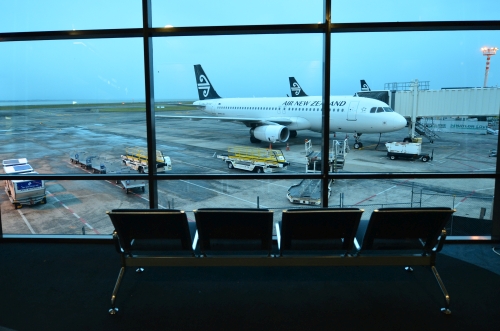In yesterday’s article, we looked at the case for infrastructure stocks. We profiled the steady rise of a couple of leading local examples: Auckland International Airport [NZX:AIA] and Infratil [NZX:IFT].
Today I want to explore when to buy infrastructure shares.
Because quality infrastructure companies can combine capital preservation, yield, and growth in their offering, they are sought-after investments. As a result, many of the current share prices are eye-watering.
Often the best time to buy infrastructure shares are when the business first lists on the exchange through an IPO (initial public offering). There is one major infrastructure business about to list on the NZX very soon, and we’ll have an update on that on Monday.
When valuing a business, analysts look at P/E (price-to-earnings ratio) and P/B (price-to-book ratio) as initial shortcuts. These ratios indicate how many times earnings and how many times asset value you must pay at the current price to own the share.
When a business offers the potential for considerable growth — for example, a new tech stock that’s hot — investors may be happy to pay a higher P/E.
Recently, average P/E ratios for New Zealand shares have been around 20.3 — about 30% above the 20-year average.
Auckland Airport
At time of writing, Auckland Airport has a P/E of around 18 and a P/B of around 2. You’re about paying 18 times earnings and a 100% premium to own the assets. No doubt, it’s a high-quality infrastructure asset, but at this level of earnings multiple, I’d want to be convinced of robust and continued growth.
Note, P/E ratios can change with new income, asset sales and many other factors. It pays to keep an eye on them and watch for the overall trend and value.
As the company is in the midst of a multi-year investment programme in new facilities, the management clearly sees longer-term growth as a given.
It is the largest owner of vacant land in the Auckland region and currently involved in significant projects — expansion of international departures, a new domestic jet terminal, a new five-star hotel, more transport links, and a second runway.
Airport of the future. Source: Auckland Airport.
I’d still be more comfortable buying the shares around $7 – $8 rather than $9+. The airport rises and falls on tourism. The two main visitor sources — Australia and China — are both currently experiencing softening economies. This creates a degree of risk for the airport’s plans.
The other major risk factor is the lack of diversification. This is a single asset confined to Auckland. A reduction in migration and people moving to other regions could slow Auckland’s growth. A natural disaster on the scale of Christchurch — most likely in the form of a localised volcanic eruption — could knock the city back drastically.
Note: we are not providing any specific recommendation for Auckland Airport shares here. Rather, we see ongoing potential for this airport in New Zealand’s largest city. That is certainly worth monitoring.
Infratil
Infratil’s assets diversify across New Zealand, Australia, and North America. While renewable energy plants, data centres, and student accommodation assets do present more risk in this business, there is also a higher dividend yield on offer.
At time of writing, Infratil also trades on a P/E of around 17 but a P/B of around 1.6.
While the P/B suggests quite good value, the company carries more debt than Auckland Airport — 93.14% net debt to equity — as opposed to the airport’s 34.38%. Over the past decade, Infratil has also operated on much lower margins than the airport, with quite choppy returns on equity.
Again, these ratios change in the course of business, so it pays to keep an eye on the overall trend across time.
Persistent low margins concern me. I was once persuaded to invest in a fast-growing UK car dealer. Everything looked great except the razor-thin margins. When low margins met Brexit gloom, the share price halved.
That said, the nature of Infratil’s business is that it looks to grow capital value as opposed to immediate operating margins. It may be poised to achieve this further with the new Vodafone investment — especially if customer base synergies can be realised with existing stablemate Trustpower.
In short, while the infrastructure assets are diversified, it’s still more difficult managing a portfolio of businesses as opposed to concentrating on one single facility. While Infratil’s investment in Longroad Energy is promising, some of the other wind and solar assets are at an early stage of development. The Longroad business lost nearly $14 million in 2018. It is also in North America, far from Infratil’s historic base in Australasia. Perhaps a long road indeed.
So, with Infratil, I’d be more comfortable buying it somewhat closer to its book value for these reasons. Note: this is not a recommendation but a situation and mix of assets that we think may have potential and is worth watching.
The NZX has continued a very bullish run lately. There would need to be some downturn to acquire Infratil or Auckland Airport at sharper prices.
For now, we’ll keep watch…and keep you informed on this most attractive sector. For many investors, it’s been a great run with infrastructure.
There could still be opportunity to fund an early retirement.
Regards,
Simon Angelo
Editor, Money Morning New Zealand
PS: In my new publication — Lifetime Wealth Investor — we’ll be profiling some of the leading infrastructure investment opportunities around the world. Many of which are available — in our view — at sharper value than similar companies on the NZX. Look out for this newsletter next week!
Important disclosures
Simon Angelo owns shares in Auckland International Airport Limited [NZX:AIA] and Infratil Limited [NZX:IFT] via portfolio manager Vistafolio.
